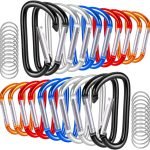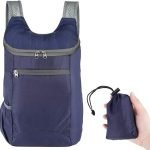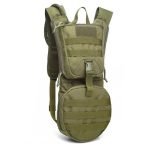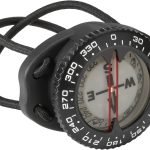When it comes to outdoor activities like camping, hiking, or cycling, having the right gear can make all the difference in your experience. One of the most essential pieces of equipment is a reliable backpack. A well-designed outdoor backpack not only carries your essentials but also enhances your comfort and performance during your adventures. In this article, we will explore the benefits of outdoor backpacks, key features to consider when selecting one, and tips for effective packing and maintenance.
1. The Importance of an Outdoor Backpack
An outdoor backpack serves as your portable storage solution, keeping your gear organized and accessible while you explore the great outdoors. Understanding the significance of a high-quality backpack can help you appreciate what features to look for when making a purchase.
Convenience and Organization
One of the primary benefits of an outdoor backpack is the convenience it offers. With various compartments and pockets, these backpacks are designed to keep your items organized and easy to access.
- Dedicated Storage Spaces: Many outdoor backpacks come with specialized compartments for items like hydration systems, sleeping bags, and personal belongings. This helps you quickly find what you need, whether you’re on the trail or setting up camp.
- External Attachment Points: Look for backpacks with external attachment points for gear such as trekking poles, sleeping pads, or helmets. This feature allows you to carry more equipment without overcrowding the main compartment.
Comfort and Fit
Comfort is crucial when choosing an outdoor backpack, especially for long hikes or rides. A well-fitted backpack distributes weight evenly, reducing strain on your body.
- Adjustable Straps: Many backpacks feature adjustable shoulder straps, chest straps, and hip belts to ensure a snug fit. This helps stabilize the load and prevents shifting while you move.
- Back Ventilation: Look for backpacks with padded back panels and ventilation systems to enhance airflow. This reduces sweat buildup and increases comfort, especially during warm weather.
Durability and Weather Resistance
Outdoor adventures often expose your gear to various environmental conditions. A durable backpack can withstand the rigors of outdoor use and protect your belongings from the elements.
- Quality Materials: Choose a backpack made from high-quality, tear-resistant fabrics that can endure rough terrain. Look for features like reinforced stitching and heavy-duty zippers for added durability.
- Waterproofing: Consider a backpack with waterproof or water-resistant materials, as well as rain covers for added protection. This feature is essential for ensuring your gear stays dry during unexpected rain showers.
2. Key Features to Look for in an Outdoor Backpack
When selecting an outdoor backpack, several features can significantly enhance its usability and performance. Understanding these features will help you choose the right backpack for your specific needs.
Capacity and Size
The capacity of a backpack is often measured in liters, indicating how much gear it can hold. Choosing the right size is essential for your activities.
- Daypacks vs. Multi-Day Packs: For short day trips, a smaller pack (around 20-30 liters) is typically sufficient. For longer excursions or overnight camping, consider a larger pack (40 liters or more) that can accommodate additional gear.
- Compression Straps: Backpacks with compression straps allow you to adjust the pack’s size based on your load. This feature helps stabilize your gear and prevents it from shifting while you move.
Hydration Systems
Staying hydrated is vital during outdoor activities, and many backpacks come equipped with features to facilitate hydration.
- Hydration Reservoirs: Some backpacks include a built-in hydration reservoir or bladder, allowing you to drink water through a hose without stopping. This is especially convenient during long hikes or bike rides.
- Water Bottle Pockets: Look for backpacks with external pockets specifically designed for water bottles. This allows for quick access to hydration while on the go.
Access and Entry Points
The way you access your gear can impact your overall experience. Consider the access points available when selecting a backpack.
- Top vs. Front Loading: Top-loading backpacks are common for traditional designs, but front-loading options provide easier access to your gear. A front-loading design allows you to see and reach your items without digging through the bag.
- Side Pockets and Zippers: Backpacks with side pockets or additional zippers make it easier to access smaller items without unpacking the entire bag. This feature is particularly useful for items you need frequently, such as snacks or maps.
3. Tips for Packing and Maintaining Your Outdoor Backpack
Proper packing and maintenance of your outdoor backpack can enhance its performance and longevity. Here are some practical tips to help you make the most of your backpack.
Effective Packing Techniques
How you pack your backpack can significantly affect your comfort and access to gear. Consider these packing strategies to optimize your space.
- Weight Distribution: Place heavier items closer to your back for better weight distribution. This keeps your center of gravity aligned and reduces strain on your body.
- Organize by Use: Pack items based on how frequently you’ll need them. Keep essentials like snacks, maps, and first aid kits in accessible pockets, while less frequently used items can go deeper in the main compartment.
Regular Maintenance
Taking care of your backpack is essential for ensuring its durability and performance. Follow these maintenance tips to extend the life of your gear.
- Cleaning: Regularly clean your backpack according to the manufacturer’s instructions. Most backpacks can be spot-cleaned with mild soap and water. Avoid using harsh detergents that can damage the material.
- Inspect for Damage: Periodically check your backpack for signs of wear, such as frayed straps or broken zippers. Addressing issues early can prevent more significant problems down the line.
Proper Storage
How you store your backpack can also impact its longevity. Consider these storage tips to keep your gear in optimal condition.
- Dry and Cool Environment: Store your backpack in a cool, dry place away from direct sunlight. This prevents the materials from deteriorating and reduces the risk of mold or mildew.
- Avoid Overloading: When not in use, avoid stuffing your backpack with unnecessary items. This can distort its shape and affect its functionality over time.
Conclusion
Investing in a high-quality outdoor backpack is a vital step toward enhancing your outdoor adventures. By understanding the benefits of using a well-designed backpack, recognizing the key features to look for, and following practical tips for packing and maintenance, you can choose the perfect backpack to meet your needs.
Whether you’re embarking on a day hike, a cycling trip, or a weekend camping excursion, the right backpack will keep your gear organized, accessible, and protected. Embrace the freedom and joy that outdoor activities offer, knowing that your backpack is equipped to support your adventures. With proper care and thoughtful packing, your outdoor backpack will be a reliable companion for countless journeys into the great outdoors.






